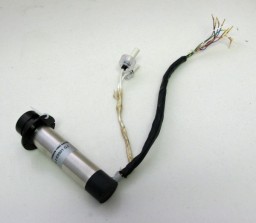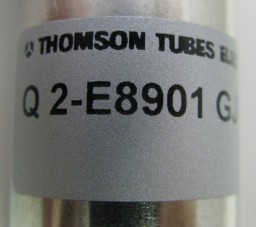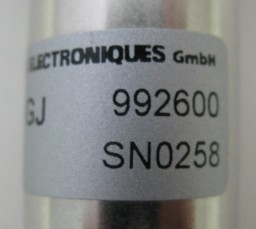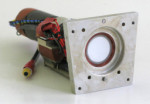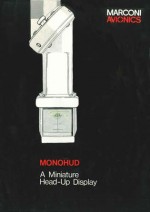MonoHUD takes its name from the concept of providing HUD symbology to one eye only. The Company chose this layout to obtain a wide field of view without using large and heavy optics and because the combining glass is located only 4in from the pilot's eye the system is quite small and light. When not in use the MonoHUD optics can be swung upwards into the roof: an important feature in the potential application to transport aircraft in what is basically an approach-guidance system. This monocular device gave flight guidance in the Landing approach such that the pilot could stay head up during the whole approach. This is vital when landing a transport aircraft in poor visibility as the classic difficulty facing the flight crew is the changeover from instruments (instrument landing system director and radio height) to visual reference as the runway comes into sight during the last few seconds of flight. Although the viewing screen is small a lot of information can be presented in the relatively wide field of view. It was suggested that a synthetic runway be drawn and to provide potential flightpath, desired-track, attitude and position data.
In about 1978 the MonoHUD was fitted to an RAE trials aircraft and after some six months of trials it was then fitted to a British Aerospace BAC 1-11. The original MonoHUD had a 25° field of view but during 1980/81 the design and manufacture of an extended 30° field of view MonoHUD was concluded. The earlier design had shown that the display became cluttered during the final seconds of approach and if there was a crosswind the symbology was crowded to one edge of the field of view. The RAE aircraft were again used for trials and the Blind Landing Experimental Unit (BLEU) saw their ‘Televiewer’ as an independent monitor for automatic landing then seen as the answer to the problem of landing in the often poor meterological conditions in Europe. The equipment was proposed for several new airliner programmes competing against other UK, US and French systems.
Around 1987 the little MonoHUD was used as a demonstrator by FARL (the research centre) for a colour display using a Liquid Crystal source.
A MonoHUD system was supplied by Marconi Avionics Inc (Atlanta) to Boeing for use in their CX Simulator. In 1983 a further five units were supplied to MAI (Atlanta) who sought to fit them into helicopter cockpits and indeed got some business for the MH-60.
Installation in Helicopters became the main market push for this little HUD, as the civil transport opportunities had not been forthcoming, and a system was offered with the MonoHUD an Electronics Unit a high voltage power supply and a control panel. The MonoHUD could be stowed when not operational and because it was only 8cm from the pilot’s eye when in use it gave a field of view of 30° x 24°. The system had all the attributes of a full size HUD in terms of modes (flight, navigation and weapon aiming) and the EU had compatibility with a multiplicity of interfaces from discretes and analogue to databus.
The MonoHUD was fitted to special versions of the Sikorsky UH-60 Black Hawk tactical-transport and in 2002 the US Government acquired an ‘Improved Mono-Head Up Display (HUD)’ for the MH-60L helicopters to provide weapon aiming cues for the flight crew. Again in 2014 an improved MonoHUD was solicited.

